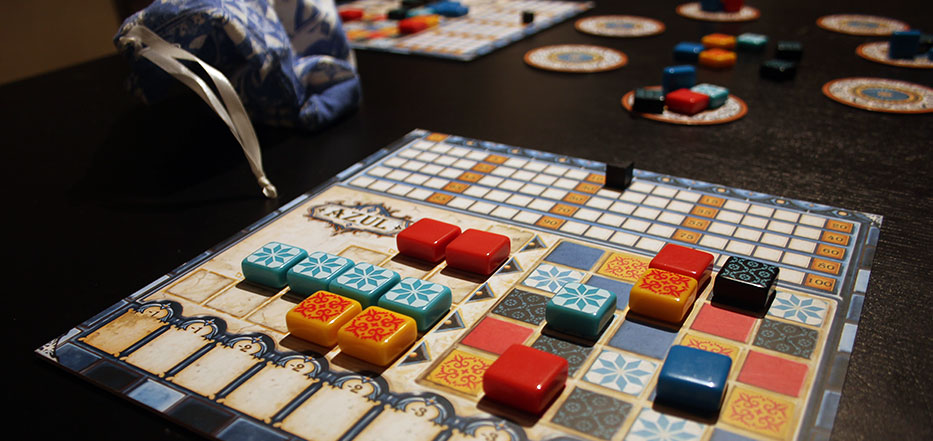
In the game Azul, players are tile-laying artists that are challenged with decorating the walls of the Royal Palace of Evora. I’ve played the game almost 2 dozen times and I’ve never felt like a tile laying master. The truth is that the theme of Azul doesn’t matter very much. That’s because the game is so incredibly good that you lose yourself in the chunky plastic tiles and strategy of beating your opponents.
Plan B Games (Next Move Games) published this tile laying masterpiece in 2017, and it’s still one of the hottest abstract board games around. It was recently nominated for the 2018 Spiel des Jahres, an award that often makes games a household name.
At the beginning of the game, each player is given a player board that contains a score tracker, tile laying area, a space to place “broken tiles,” and information about end game scoring. In the center of the table are circles that are referred to as factories. These factories produce 4 tiles each round, and that’s where players will grab the tiles they need to complete their mosaic.
On your turn, you get to draft tiles of a similar color from any factory on the table. If you want red tiles, you have to take all the red tiles at a specific factory. Play these newly acquired tiles on any row of your board. If you try to place too many tiles in a row and run out of space, the extra tiles fall on the floor and break, essentially giving you negative points that round.
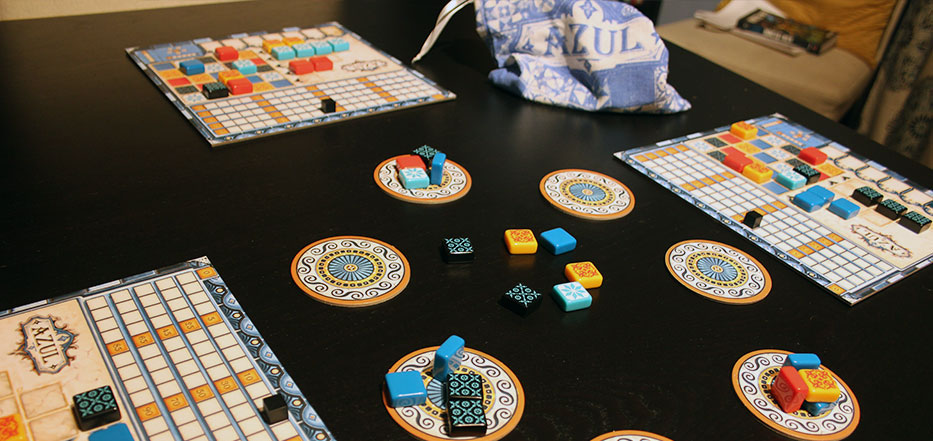
A round ends when all the factories are empty and no more tiles can be taken from the middle of the table. If you filled a row with a single color of tiles, move one of those tiles to their specified space. The closer you group your tiles, the more points you’ll make on a turn.
Tiles Tiles Everywhere
The game always starts out slow, but as you develop a strategy you’ll begin racking up the points. In the first round it’s common to score 3 to 5 points, while in later rounds you need to score double digits to really compete. Placing a tile in a grouping of previously placed tiles is the way to go, since points are scored both vertically and horizontally on the board.
Something that continues to impress me each time I play Azul is the way the game is balanced. Factories are filled by randomly drawing from a bag of plastic tiles, so some rounds may not give you the tile combination you need. The players around you may also be fighting for the specific tile you want, which can cause you to reevaluate as you look around the table.
There’s a tension that Azul creates depending on the players at the table, and this is something I absolutely love. If I know that my opponent needs two blue tiles, I’m going to do anything in my power to use them before their turn comes around. If the other player cannot complete a row of like tiles, that incomplete row will sit there for another turn and they cannot score those points in that round.
When players take tiles from the factory, any tiles that are not the same color will be pushed into the center of the table. This pile of tiles will grow if players aren’t taking tiles from the center of the table. It’s fun to watch players stubbornly ignore these tiles until it becomes a problem. If you’re the last player to choose tiles in a round, chances are you’ll have to grab the last of the like tiles in the center of the table. You never want to be the player that’s stuck taking 5 red tiles that you can’t fit on your board. If you can’t place a tile, these tiles count as negative points against your score.
Azul challenges players to give up their perfect plan in order to get more tiles on the board no matter what color they are. At the end of the game, players get +2 bonus points for each complete row, +7 bonus points for a complete column and +10 bonus points if you place 5 tiles of the same color on your board.
Top Notch Gameplay and Components
The components for this game are some of the best around. The tiles are large, chunky and vibrant. The player boards are thick and will hold up for years of play. Even the bag and box insert are very well made. Azul is a game that draws people in with its style and keeps them engaged every round. If you need an added challenge you can flip the player boards over where the mosaic tile pattern isn’t defined.
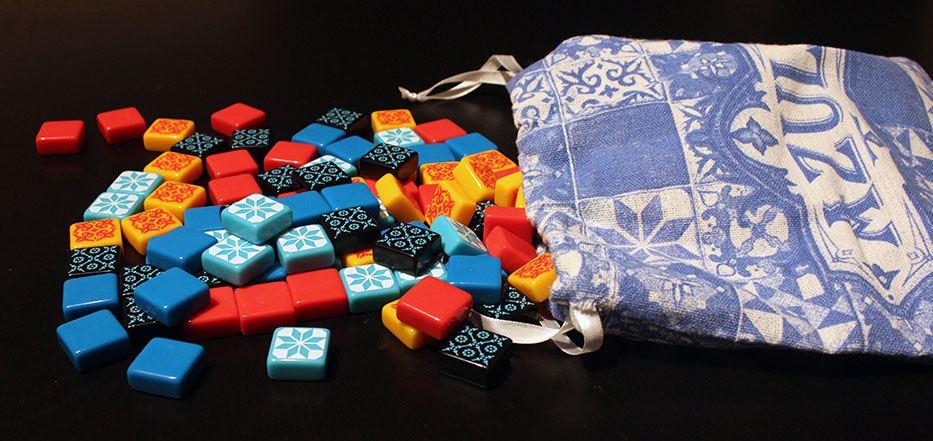
Erin and I have been so impressed by how Azul scales with different player counts. The game feels great with 2, 3 or 4 players. There are only 5 factories to choose from at lower counts and 9 factories with 4 players. This small change makes a significant difference in the choices on the board and how the game plays out. Azul is a great game to play as a couple after a long day of work when the kids head to bed.
We’ve taught about 20 people how to play Azul and the biggest hurdle has been how to score each round. The scoring is similar to a game like Qwirkle where points are counted based on the row and column that the new tile is added to. It usually takes a person a game or two to understand the scoring. When playing with kids, we give them a hand counting up their score as we come to the end of a round. Once you get this down, scoring is a breeze.
It’s easy to see why Azul is currently our most played game in 2018. The game is beautiful, accessible to new gamers and plays in around 30 minutes. There’s so much to love about Azul and it’s wonderful to see how much love this game is getting around the world. If you’re looking for a new addition to your family game shelf, consider picking up this gem of a game today.
Drop by your local game store to pick up a copy of Azul or purchase it on Amazon today.
Highs
- Players are engaged on every turn
- Components and design for Azul are fantastic
- Fun at every player count
- Double-sided player board for an additional challenge
Lows
- The theme doesn’t matter
- Scoring feels clunky your first couple games

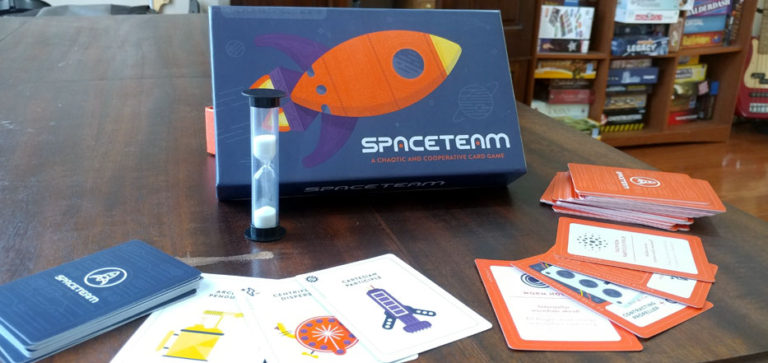
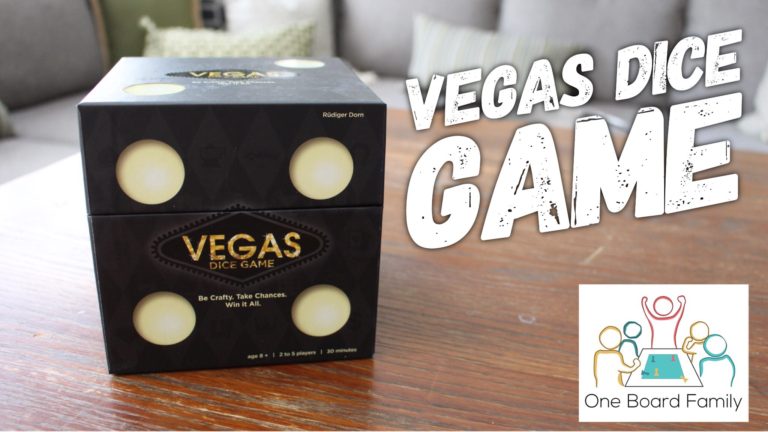
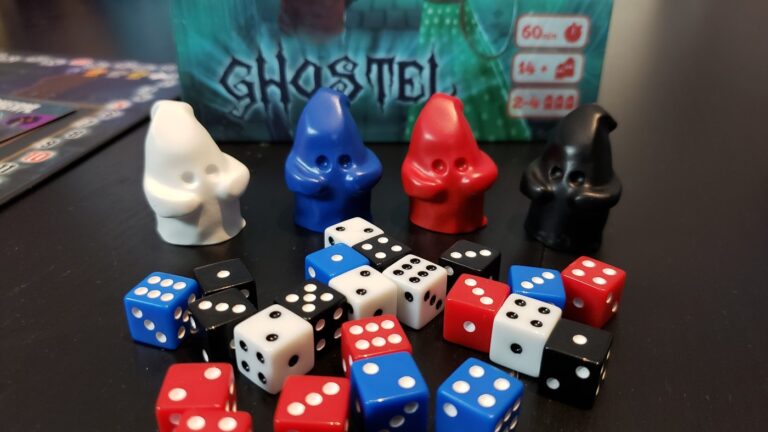
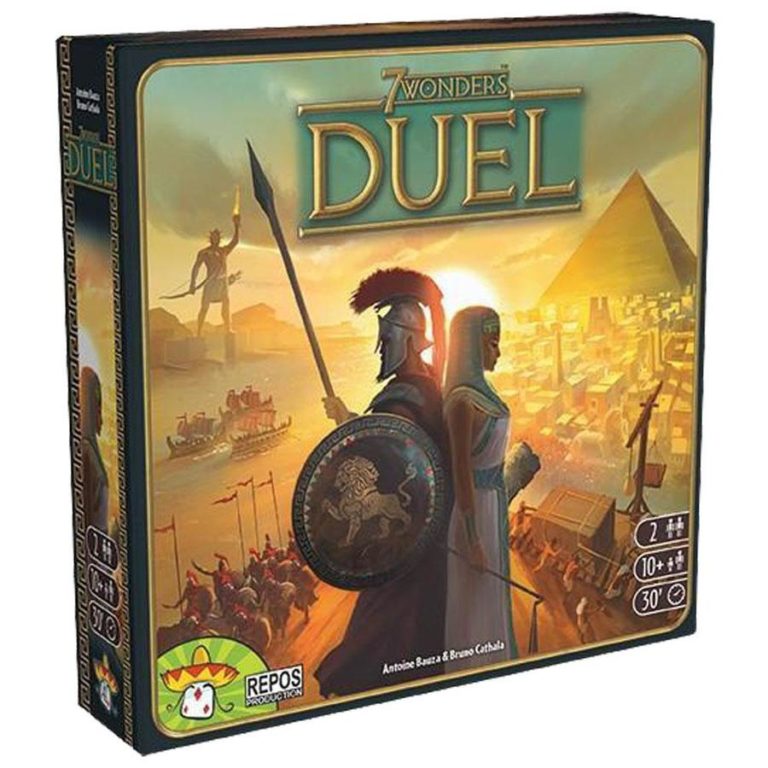
[…] Review: Azul […]
[…] may not be the huge hit that Azul was in 2017 but that doesn’t stop it from being a go-to game for our family game […]
[…] The Palaces of Carrara. They also have some other phenomenal designs by themselves as well as with Azul, Riverboat, and 6 Nimmit. Their design resume is very long and I’m sure I could fill pages and […]
[…] Azul works really well as a two player game, which is also why I chose it as “the game of the decade.” The year we bought Azul, Ryan and I played it more than any other game on our shelf. Gameplay is smooth and relaxing, and it served as a destresser after a long day of work. […]
[…] am a big fan of the Azul series. The original is a wonderful gateway game and I have seen that game bring many people into the hobby of modern […]
[…] continues to change as players take their turns. Gorinto will sit nicely beside abstract games like Azul, Photosynthesis and Dragon […]